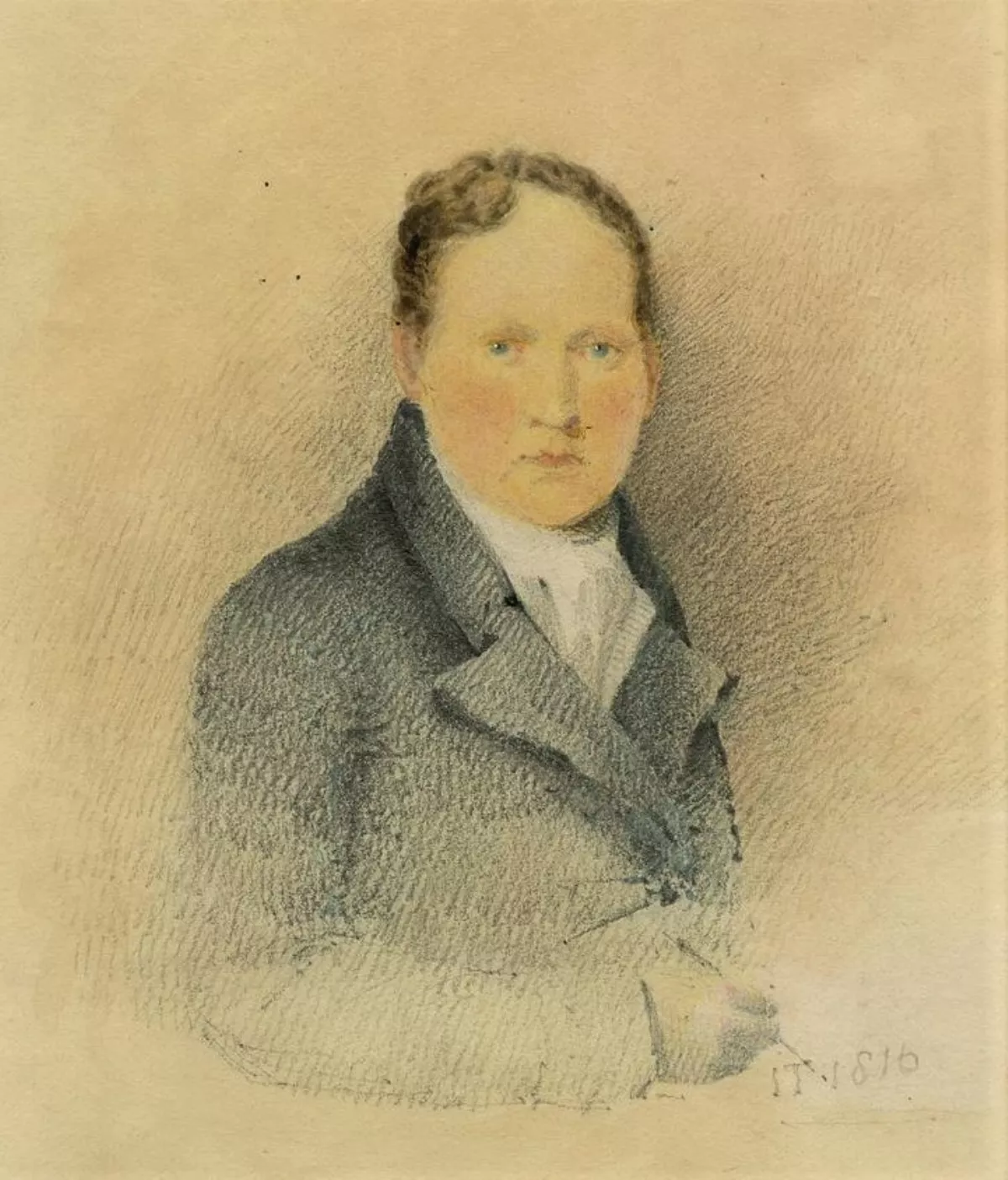 1.
1. John Thirtle was an English watercolour artist and frame-maker.

 1.
1. John Thirtle was an English watercolour artist and frame-maker.
John Thirtle produced frames for paintings by several members of the Norwich School, including John Crome and John Sell Cotman.
The majority of John Thirtle's watercolours are of Norwich and the surrounding Norfolk countryside, many being riverside scenes.
John Thirtle's style, influenced by Thomas Girtin, Crome and Cotman, was technically accomplished.
Much of the biographical detail about John Thirtle is undocumented, and little is known of his life.
John Thirtle's parents were well-known members of the local community.
John Thirtle's father, who worked in Elephant Yard off Magdalen Street as a bootmaker and an overseer of the poor, was a churchwarden at St Saviour's.
In 1790, the 13-year-old John Thirtle was apprenticed to Benjamin Jagger of Norwich, the leading carver, gilder, picture dealer and printmaker in the city.
When John Thirtle framed George Vincent's oil painting Trowse Meadows, near Norwich, he made a watercolour version of it.
John Thirtle's earliest known work is his landscape The Windmill, an unusual subject matter for him, as he first exhibited works that were not landscapes, but portraits and paintings of other subjects.
John Thirtle exhibited five paintings as one of the five featured artists.
John Thirtle was a major figure within the Norwich School of painters.
John Thirtle was probably a founding member of the Norwich Society of Artists, but his membership of the society was only first recorded three years after it was founded.
John Thirtle exhibited during the first years of the society, showing only miniatures.
Crome, Cotman and John Thirtle were sources of inspiration for the artists of the Norwich School.
John Thirtle served as vice-president of the society from 1806 to 1812.
John Thirtle exhibited only once outside Norwich, at the Royal Academy in London in 1808.
On 26 October 1812 John Thirtle married Elizabeth Miles of Felbrigg, from a minor landowning family in north Norfolk; her sister Ann had married Cotman three years previously.
In 1814 John Thirtle was elected President of the Norwich Society of Artists, but he was one of three leading artists to secede from the Society in 1816 to form the Norfolk and Norwich Society of Artists.
John Thirtle's occupation is doubly to be regretted, because he stands highest and alone in the particular and beautiful department of watercolours in which he has evinced so much decided excellence.
At some time, while Cotman was contributing drawings for the Excursions in the County of Norfolk, John Thirtle went to Great Yarmouth to help his brother-in-law, but none of his drawings appeared in the published work and he probably assisted Cotman by relieving him of his teaching activities.
John Thirtle's mother died in 1823; an inheritance from his father, who died in 1825, may have given him some financial security for the remainder of his life, as 1825 is the first year in which he is known to have independently owned property.
John Thirtle continued to produce picture frames as well as to paint river scenes, reminiscent of the works of Peter De Wint.
John Thirtle is known to have suffered from tuberculosis for many years.
John Thirtle died of tuberculosis in Norwich on 30 September 1839, and was buried in the Rosary Cemetery in Norwich.
John Thirtle left the sum of 2,000 to his wife Elizabeth.
John Thirtle outlived him by many years, dying in 1882 at the age of 95.
John Thirtle exhibited 79 works in Norwich, the majority of which were of the city or the Norfolk countryside.
John Thirtle's style was influenced by the English watercolourist Thomas Girtin, as well as fellow members of the Norwich School, such as Crome and Cotman.
John Thirtle responded to Cotman by producing works that were technically accomplished.
John Thirtle surpassed both Crome and Cotman as a watercolourist of outdoor phenomena.
John Thirtle went on to paint with greater brilliancy of colour, producing works that included angular block forms.
John Thirtle used a natural indigo pigment for producing fine greys, obtained from indigofera tinctoria, a species of the bean family.
John Thirtle was praised in the local press for his work, but was criticised for not exhibiting his works more regularly.
An exhibition of John Thirtle's paintings was first held by the Norwich Art Circle in 1886.